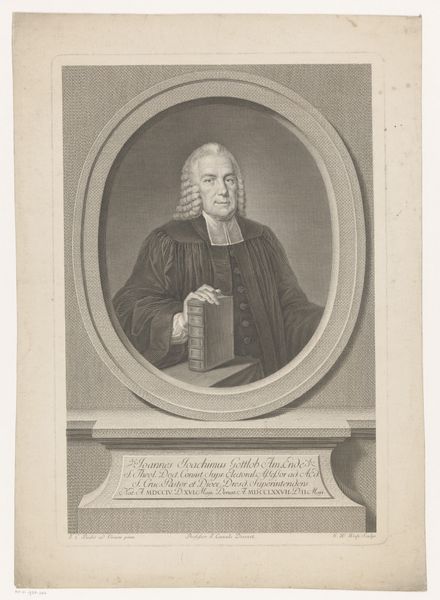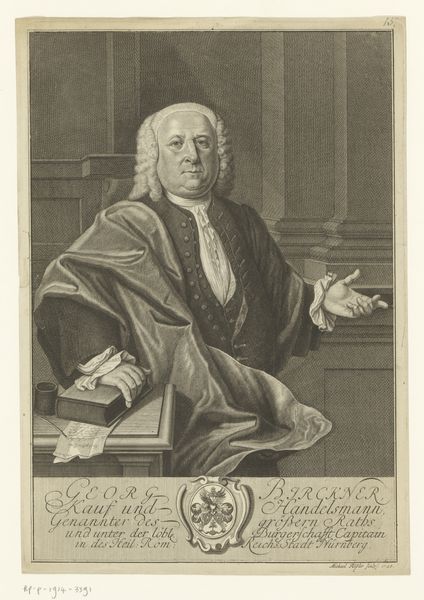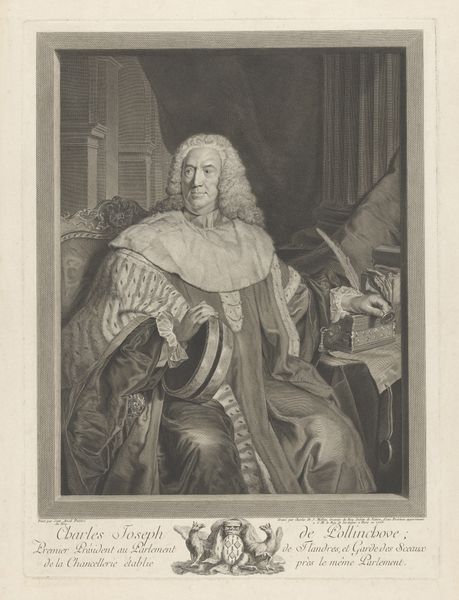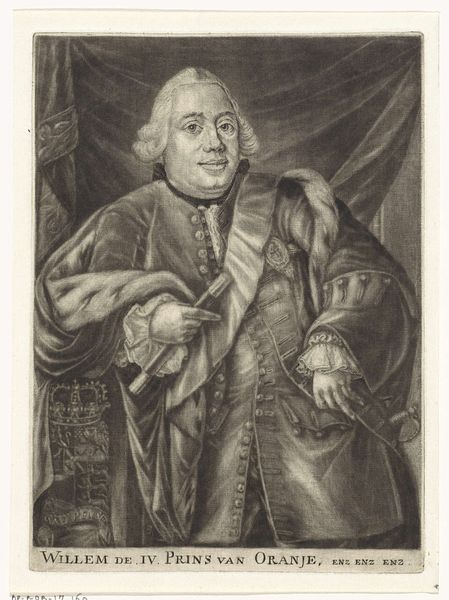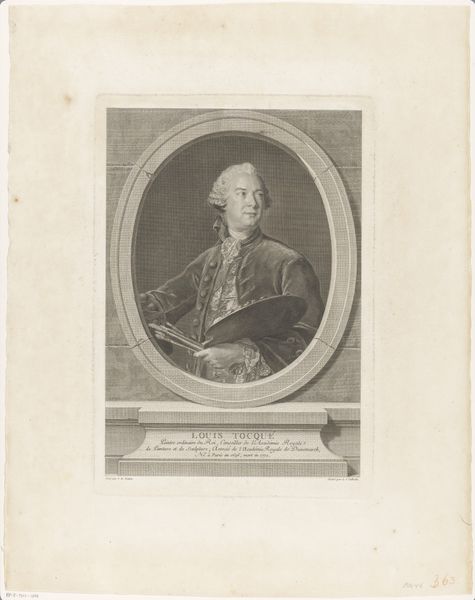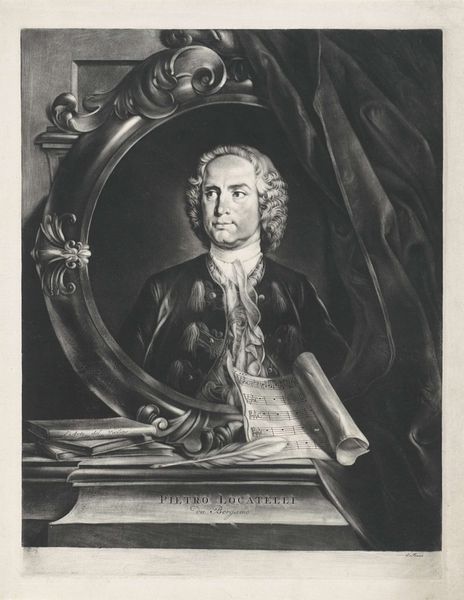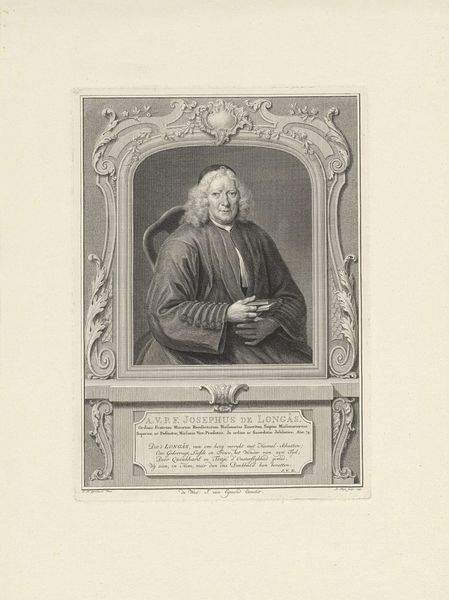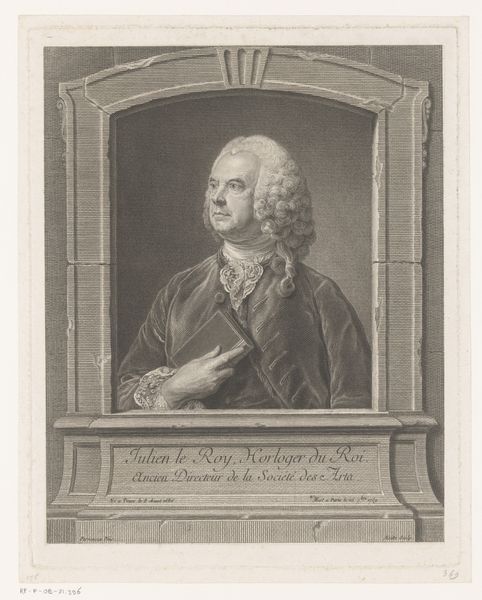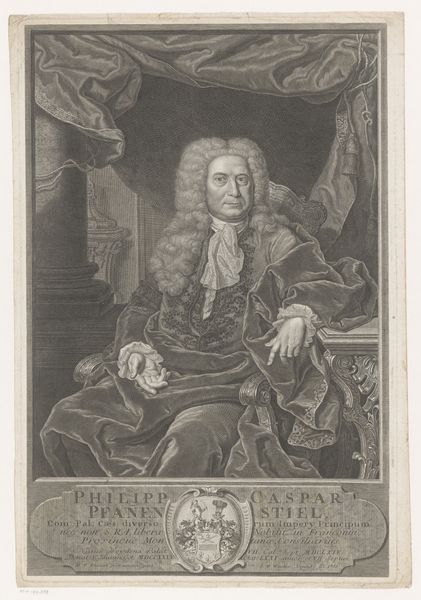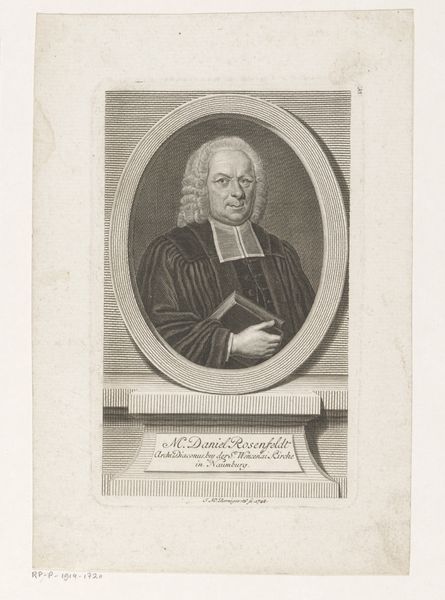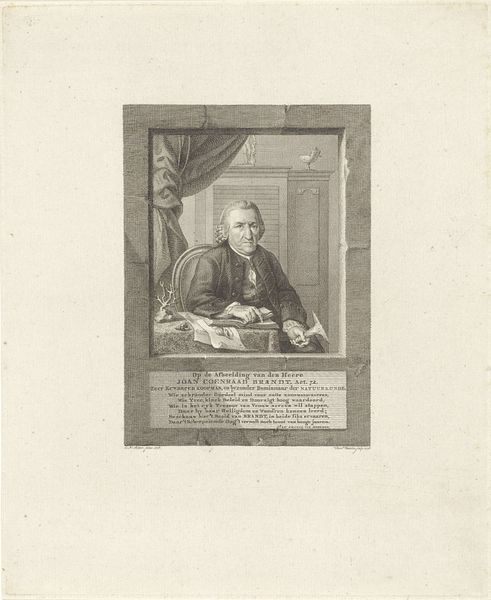
graphite, engraving
#
portrait
#
neoclacissism
#
graphite
#
graphite
#
engraving
Dimensions: height 538 mm, width 412 mm
Copyright: Rijks Museum: Open Domain
Curator: Allow me to introduce Michele Benedetti’s “Portrait of Antonio Canova,” circa 1805. Executed in graphite and engraving, it offers a glimpse into the world of Neoclassical artistry. Editor: There's a crispness here, a tangible sense of texture. The contrasts between light and shadow lend the figure an almost sculptural presence, a fitting tribute to the subject, Canova himself. Curator: Indeed. Notice how Benedetti utilizes line to construct form. Each mark contributes to the overall structure and definition, adhering to Neoclassical principles of clarity and order. Editor: I’m intrigued by the tools and sculptural elements depicted—the lion, the reclining figure in the background. What story do these components tell about the creation of sculpture at the time? What workshops, labor, and economies facilitated Canova's work? Curator: Those details provide essential context. The background drapery, classical statuary, all converge to establish Canova's status as an eminent figure within the artistic landscape of the time. Note also how the composition employs a rigorous visual logic to emphasize Canova's position in a carefully calibrated tableau of prestige. Editor: That tableau seems purposefully designed for public consumption. What was the societal role of artisans during this period, and what kinds of materials were accessible? Consider that each pencil stroke represents the product of both accessible and restricted materials that dictated visual expression and influenced how such a figure would be regarded at the time. Curator: Quite insightful. The artwork embodies both a dedication to structural principles and to symbolic positioning, a true reflection of Neoclassical ideals. Editor: I see this piece as more than just an artifact; it is an outcome resulting from a convergence of social systems, labor conditions, and economic realities, each influencing the marks that the artist was able to render on paper.
Comments
rijksmuseum about 2 years ago
⋮
This portrait shows Canova at work on his most famous creation, the funerary monument for Archduchess Maria Christina of Austria (see adjacent). A winged genius – a type of guardian angel – lies on a mourning lion to the right of the tomb’s entrance. The cloak worn by the sculptor and the laurel wreath are honorific vestments, not work clothes. The print was made after a painting owned by the Russian diplomat Razumovski and is dedicated to him.
Join the conversation
Join millions of artists and users on Artera today and experience the ultimate creative platform.
